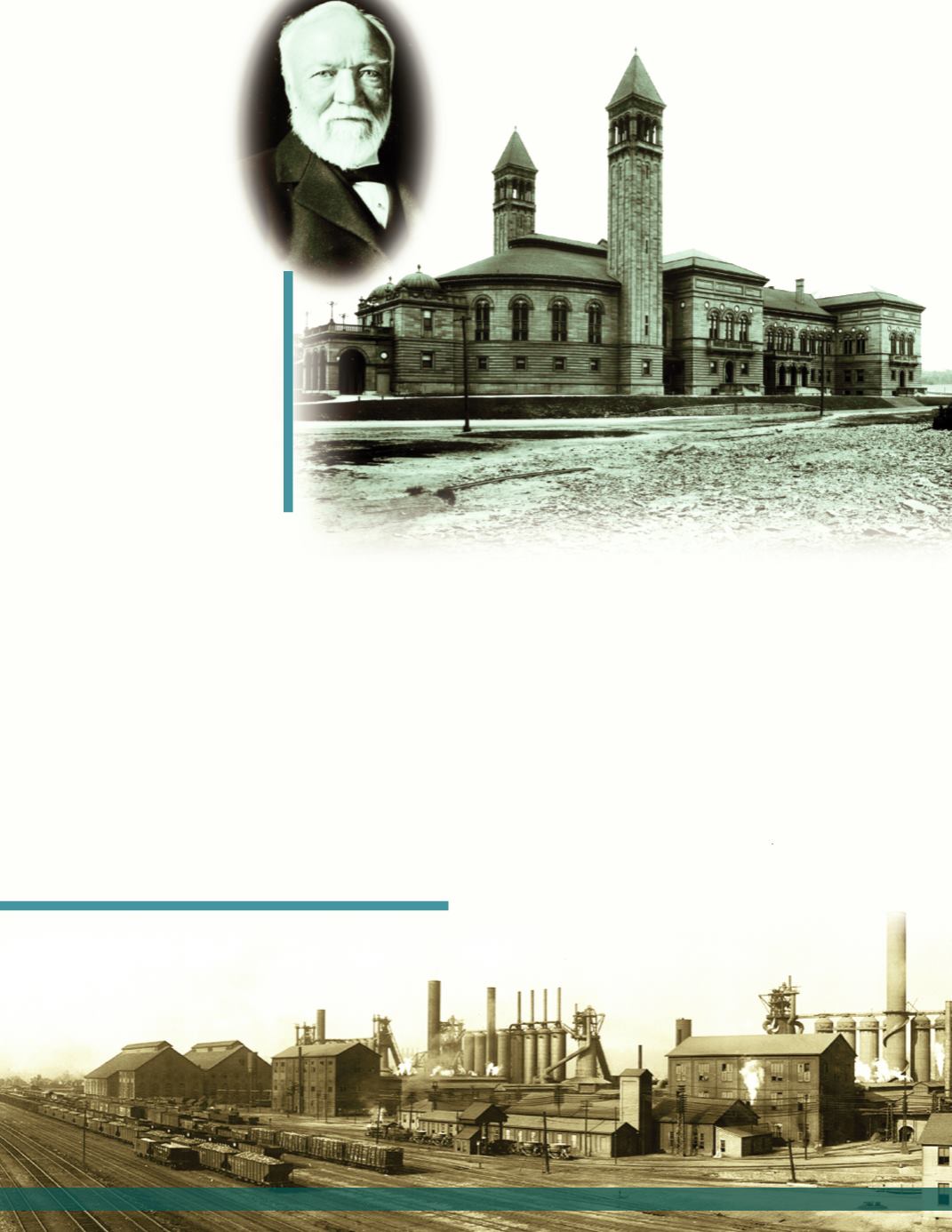
88
Understanding Pennsylvania
roebling
Steel
In 1848, when Carnegie was thirteen, his family
moved fromScotland (part of Great Britain) to the
United States. He began working in a Pittsburgh
factory for $1.20 a week. Soon, he obtained work as
a telegraph operator at $4.00 per week. During the
Civil War, he worked for the Assistant Secretary of
War for $35 per month. Carnegie saved and invested
hismoney in iron, oil, and railroads. Hemade large
profits fromhis investments. However, he saw huge
profits in steel.
In 1873, while on a trip to England, Carnegie
learned about the
Bessemer process
for making steel.
This new processmade it possible to produce steel at
amuch faster rate and was less expensive than the
old way. Two years later, he brought the new process
to Pennsylvania and opened a steel factory in
Pittsburgh, the largest mill of its time. Over the years,
he built a number of other steel plants. By 1892, his
steel company grew into the huge Carnegie Steel
Company. In 1901, he sold his company for nearly
$500million dollars! Later, the company he had owned
was renamed the United States Steel Corporation.
There was a huge demand for steel. Steel was
needed tomake rails for the railroads, locomotives,
bridges, steamboats, and tools. Pittsburgh became
the steel producing capital of the world. However,
other Pennsylvania cities such as
Johnstown
,
Steelton, and
Bethlehem
also became well known for
their production of steel. And until 1880,
Pennsylvania was the leader inmining of iron ore, the
rawmaterial used tomake steel. Today, Pennsylvania
still leads the nation in the production of specialty
steel. This category of steel includes a combination
of
alloys
that are added to strengthen steel,
stainless steel, and steel tools.
Andrew Carnegie believed that some of his
money should be used for the good of the people.
During the rest of his life, he gave away $350million
to colleges, libraries, and other worthy causes.
AndrewCarnegie owned several steel mills in and around
Pittsburgh. Technological innovation in production allowed
his plants to efficiently and inexpensively produce steel and
iron of the highest quality.
While well known for his
steel empire, Andrew
Carnegie also was famous
for his philanthropy. He
believed that great wealth
also carried with it
enormous social
responsibility. He donated
generously to education and
the arts, and his grants
funded thousands of
libraries worldwide. This
first branch of the Carnegie
Library of Pittsburgh
opened in 1895.
Carnegie Library, Pittsburgh
circa 1901.


